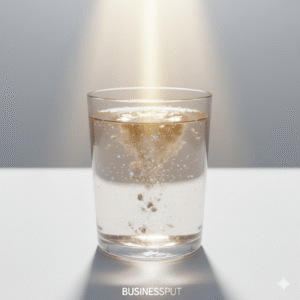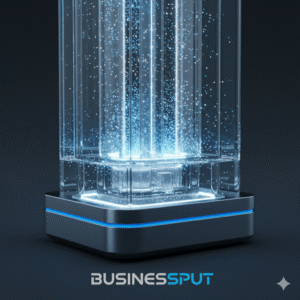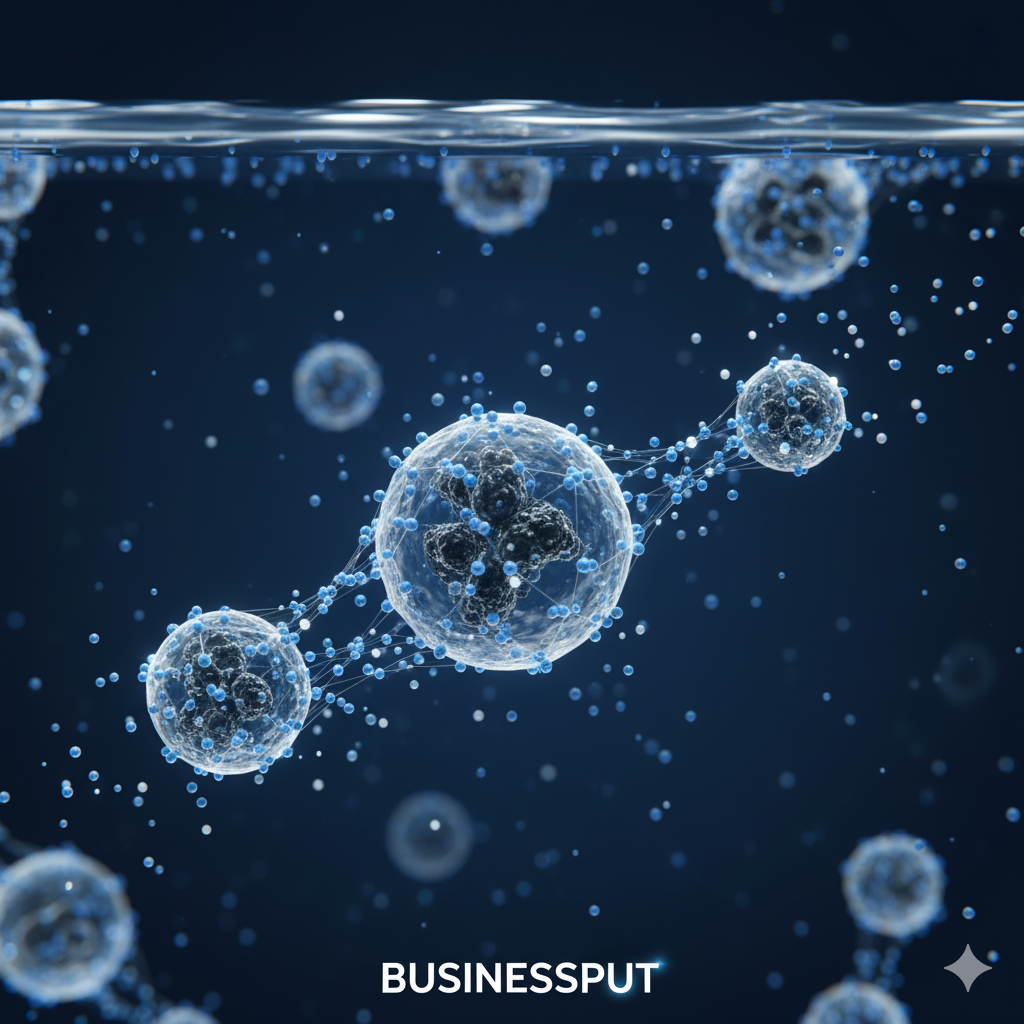Nanotechnology is transforming the future of clean water 🌍. Discover how microscopic innovations are solving global water crises and bringing hope to millions.
💧 Nanotechnology: Future of Clean Water globe.
Water is life. 🌊 It feeds the soil, supports all living creatures, and runs through the history of human existence and development. However, nowadays, in the world, even this symbol of purity, of renewal, is beginning to be a crisis. Millions of people in Mumbai, the deserts of Africa, and thousands of other places across the globe wake up every morning and find themselves in need of one drop of clean water.
The world health organization cautions half of the world population will have to reside in water stressed regions by the year 2025. The rivers are drained, ground water polluted, and the industries still empty into the veins of nature toxic wastes.
Yet in the face of this increasing obstacle, science is making a miracle behind the scenes, a solution that you can not see but that is very strong and capable of altering the destiny of man kind. Here is nanotechnology, a world where the smallest particles of nature are reconfiguring the future of clean water. 💧
✨ GROVE The Global Water Crisis: A Thirst the World Can’t Ignore.
Can you imagine that you wake up and the only water to drink is of metallic or putrefied odor. This is not fiction and this is the reality of billions of people every day. More than 2.2 billion of the population does not have access to safe drinking water. 80 percent of wastewater in the world is released without treatment.
💰 The Market of water is projected to increase by 55 percent by 2050, which is overwhelming in terms of straining the natural resources. And the frightening fact about this is — though water treatment is present in many cities, contemporary pollutants such as microplastics, medications, and heavy metals make their way into the use of traditional systems.
Reverse osmosis, sand filtration and chlorination are working, but they are no longer sufficient. But what about a smarter, faster, cheaper, more sustainable method of purifying water? Thinking smaller is the answer the billion times smaller.
🧬 What Is Nanotechnology?
Nanotechnology refers to the science of the tiny, so tiny that a nanometer is a billionth of a meter. In perspective, one strand of human hair weighs approximately 80, 000 nanometers! Materials at such a small scale will act in unbelievable ways. They are more responsive, absorbent and accurate, qualities which render them ideal in cleaning the most contaminated water. Think of it like this:
💡 Nanotechnology creates smart materials that are able to filter and destroy tiny pollutants rather than relying on bulky filters that are unable to detect them when they are smaller than a mole. Killing bacteria to extracting the toxic metals, nanoparticles are the final water watchdogs, silent, invisible and so effective. The Magic in Motion

💦 How Nanotechnology Purifies Water.
Nanotechnology is not a single invention, it is a box of tricks that can be used jointly to address all forms of water pollution conceivable. What are the ways these fantastic technologies operate:
⚛️ 1. Nanoadsorbents The minute pollution magnets
🧲. Just suppose that there are millions of microscopic sponges in the water that absorb all the dirt, dye, or metals that they come into contact with. And that is what nanoadsorbents do! They possess a huge surface area (one gram of nanoparticles can cover a football field size!): this means that they can attract and trap pollutants rapidly and effectively.
Top performers include:
Carbon Nanotubes (CNTs): Eliminate heavy metals such as lead, mercury and cadmium. Graphene Oxide: Adsorbs arsenic, dyes, and oil-residues. Iron Oxide Nanoparticles: Magical water cleaners that are easily eliminated by a magnet. 🧲 They can be reused, are not toxic provided that they are well designed and are very efficient even in small quantities- a dream solution to the developing communities.
🧴 2. Nanomembranes The Invisible Filters 🌫️.
The conventional filters are able to block anything large, but what about chemicals or viruses so minute that they cannot be seen? Add nanomembranes – really thin filters with nano-pores that only allow pure water molecules to enter. Game-changing examples: Graphene-Based Membranes: Ever wanted to drink seawater? This filter is able to remove salt ions and convert it into drinkable water.
⚙️ Carbon Nanotube Membranes: Provide faster filtration and clogging is minimized. Electrospun Nanofiber Membranes: It is designed to capture certain pollutants, such as pesticides or microplastics. Such nanomembranes are extremely light, energy efficient and durable and ideal to be used in households, with industrial wastewater treatment, and even in space missions! 🚀 🌞
3. Nanocatalysts Photocatalysis ☀️
Cleaning Water with Sunlight. What do you think about the fact that contaminated water can be purified only by sunlight? It is not science fiction but photocatalytic nanotechnology. One such action is when some nanoparticles, such as Titanium Dioxide (TiO 2 ) are subjected to sunlight and cause a reaction to eliminate bacteria, viruses, and organic pollutants. It is like making sunshine into a natural disinfectant! Other good examples are: Zinc Oxide (ZnO): Dyes and chemical residues are destroyed.
Silver Nanoparticles (AgNPs): Kill germs and use water as drinking water. No chemicals or electricity are needed in this process, and therefore it is best used in remote, rural, and low-income areas. 去. 📡
Nanosensors The Water Guardians. It is one thing to clean water but it is quite another to check its quality in real time and this is where nanosensors are involved. Such ultra-sensitive detectors are able to detect one molecule of a pollutant. Aspire to the intelligent filter, which does not just purify the water, but informs you that it is safe to drink it! Applications include:
🔍 Heavy metal detection of lead, arsenic and mercury.
🦠 Detecting dangerous bacteria and viruses.
📱 Connecting to mobile applications with real-time water quality information. Such purification is the way ahead which is destined to be purposely done by using the brain, i.e., is called smart purification and is being experimented in various cities such as Singapore, Tokyo and Toronto.
🌱 Widely used Nanomaterials in the purification of the water.
| 🌐 Nanomaterial | 🔧 Function | 💦 Removes |
|---|---|---|
| Silver nanoparticles (AgNPs) | Antimicrobial | Bacteria, viruses |
| Carbon nanotubes (CNTs) | Adsorption & filtration | Heavy metals, organics |
| Graphene oxide | Adsorbent/membrane | Arsenic, dyes, oil |
| Titanium dioxide (TiO₂) | Photocatalyst | Organic pollutants |
| Iron oxide nanoparticles | Magnetic separation | Arsenic, fluoride |
| Zinc oxide (ZnO) | Photocatalysis | Pathogens, dyes |
| Nanozeolites & clays | Ion exchange | Ammonium, nitrates |
🌸 Real-Life Success Stories That Help You Believe in Hope.
India, 2014: Nano-Silver Villages Filters. Indian engineers at IIT Madras developed low-cost silver nanoparticle filters which eliminate 99.9 percent of the bad bacteria – without electricity! ℊ, these filters are now in use in thousands of Indian homes and provide the first taste of clean water to rural families. 🇺🇸
USA: NASA’s NanoCeram Filters NanoCeram filters were created by NASA scientists with alumina nanofibers to capture bacteria and viruses. Such filters are so effective that astronauts are using them in space voyages!
🚀 Japan: Photocatalytic Reactors. The solar-powered TiO 2 reactors that are being tested by Japanese researchers are designed to treat wastewater in the textile industries- one of the most pollutant-intensive industries on our planet. The result? No chemicals, no electricity, no crystal-clear water. 🌞 China: 🇨🇳 Graphene Desalination Plants. China is also constructing gigantic graphene filtration facilities to turn seawater into freshwater – opening the door to sustainability of water supply in coastal cities.
�� No innovation is perfect. Although nanotechnology is a revolutionary development, there are challenges associated with it that must be well handled. 🧫
1. Nanotoxicity Concerns Some nanoparticles such as silver or titanium dioxide may be toxic to aquatic organisms when discharged in large amounts. To make the eco-friendly coatings and biodegradable nanomaterials safer, scientists are working on them.
💰 2. Production Costs The cost of manufacturing is too high to move to mass adoption. Nonetheless, scientists are coming up with alternative methods of green synthesis with the help of plant extracts and waste products to save costs. 🌿 ⚖️
3. Regulation Gaps Universal standards regarding the use or disposal of nanomaterials in the treatment of water are yet to be established. The global policymakers are currently formulating structures that can be used to make safe and ethical use. 🏭 4. Scaling Up for the Masses Small-scale laboratory inventions need to be invested in, would demand infrastructure, and would need international collaboration to transform them into large-scale industrial applications.
💬 The Human Side of Nanotechnology ❤️.
There is a strong human narrative behind the science of nanotechnology. To a rural Pakistan mother it is promise of clean water to her children. To farmers in Africa, it is the guarantee that their crops would grow in the absence of toxic metals. It is portable nano-filters to save lives when it comes to disaster zones that flood or earthquake hit and every second matters. It is not only about molecules but about hope, dignity and survival. Nanotechnology does not just clean water, it reinstates equality. It provides all communities with equal opportunities to healthy living irrespective of their wealth or location.
���thy lover ���thy lover.

🔭 The Future: What Lies Ahead 🚀
Nanotechnology is in its infancy and the best is yet to be experienced. The next thing scientists are working on is this: ☀️ 1. Solar-Powered Nano Systems A self-cleaning water filter that would be solely fueled by sunlight would be a thing to dream of – that is, in off-grid villages or in a disaster zone. 🌞 🧠
2. AI + Nanotech = Smart Water Nanosensors with AI can also be designed to form self-learning purification systems that would adjust to the water profile on site. 🌿
3. Bio-Inspired Nanomaterials Scientists are even imitating the filters used by nature such as the self-cleaning lotus leaf to create sustainable and environmentally friendly nanoparticles.
💧 4. Cheap Desalination to Everyone. Soon, graphene membranes can render seawater desalination affordable and efficient to address the problem of water shortage in the world. 🌊
🤝 5. International Watersheds Equity. With the aid of the United Nations and the private technological firms, international partnerships are also introducing nanotech water initiatives to the third world countries.
🧠 Expert Insights
Nanotechnology presents us with an opportunity to re-imagine the way we treat water, as not as a resource to be managed but as a right to be defended. It is the U.S. Department of Energy that has been driving the creation of nanotechnology devices and products.
Dr. Zhong Lin Wang, Georgia Tech.
Any nano-based water system fitted in a rural house is a success to human dignity.
UNESCO Science Report (2024) It is not only cleaning water we are redefining sustainability on a molecular basis.
The reason is that modern society requires a clean and healthy environment.<|human|>This is because the present day society needs a clean and healthy environment.
🌟 In conclusion,
tiny particles have a giant impact 💧✨
When we discuss nanotechnology, we are discussing hope as much as science.
These tiny wonders are changing how people relate to water in a world where billions of people still lack access to it. They stand for the combination of creativity, compassion, and sustainability.
Every tiny particle, from metal-capturing nanoadsorbents to solar-powered photocatalysts, contributes significantly to the creation of a cleaner, safer, and more just world.
Yes, there are still difficulties. However, the goal of universal access to clean water is attainable if responsible innovation, international collaboration, and compassion propel advancement. 🌍💙
The smallest things can sometimes have the greatest impact, after all.
Because every drop matters. 💧✨




